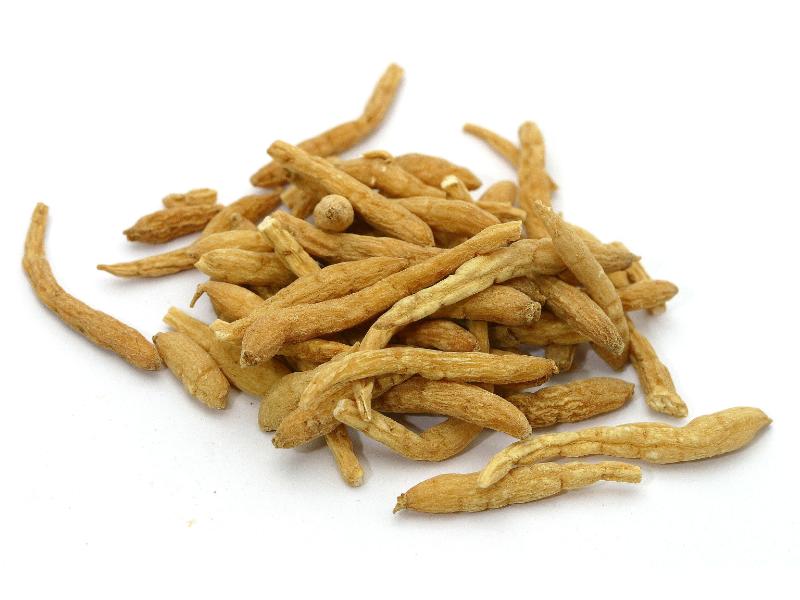Back to search result
Previous
Next

Search in medicinals
Pseudostellariae Radix
Pseudostellaria [root]
太子参 〔太子參〕 tài zǐ shēn

Alternate English names: lesser ginseng
Alternate Chinese names: 童参 tóng shēn; 孩儿参 hái ér shēn
Kingdom: Plant
Origin in PRC Pharmacopoeia: Pseudostellaria heterophylla (Miq.) Pax ex Pax et Hoffm. (PRC Pharmacopoeia)
Origin in unofficial sources: Pseudostellaria heterophylla (Miq.) Pax ex Pax et Hoffm.*; Pseudostellaria maximowicziana (Franch. et Sav.) Pax ex Pax et Hoffm.
Use: Medicinal
Category: Supplementing agents / Qì-supplementing agents
Properties: Sweet, slightly bitter; balanced.
Channel entry: Spleen and lung channels.
Actions and indications:
- Boosts spleen qì and nourishes stomach yīn: Reduced eating and fatigue from spleen qì vacuity or stomach yīn vacuity.
- Supplements qì and engenders liquid: Qì vacuity with damage to liquids, manifesting in lung vacuity with dry cough, heart palpitation and insomnia, or vacuity heat with profuse sweating.
- Tài zǐ shēn is similar to Xī yáng shēn (西洋参 Panacis Quinquefolii Radix, American ginseng). Both supplement the qì and yīn of the spleen and lung. Both engender liquid and allay thirst, and also clear fire. However, tài zǐ shēn is weaker than xī yáng shēn in all these actions. It is used for mild patterns and for children.
Dosage and method: Oral: 10–30g in decoctions.
Quality: Fat moist sand-colored roots without fine roots are best.
Production area: Jiāngsū, ānhuī.
Back to search result Previous Next